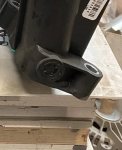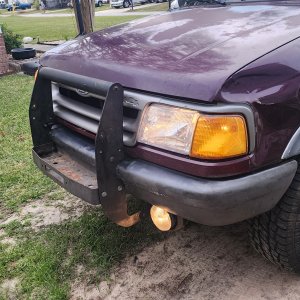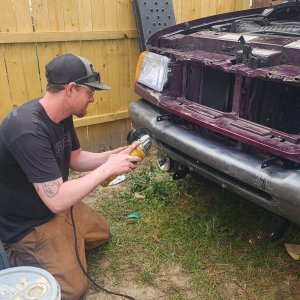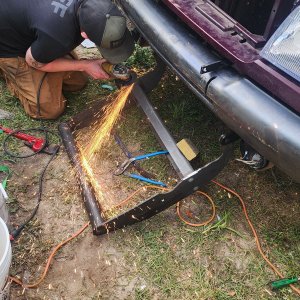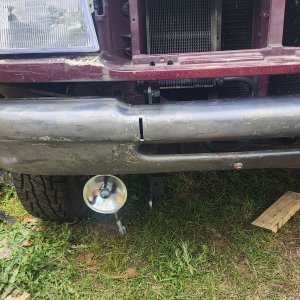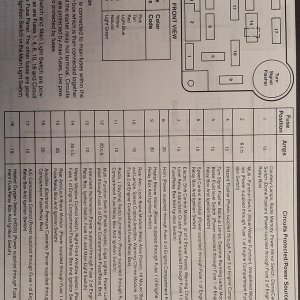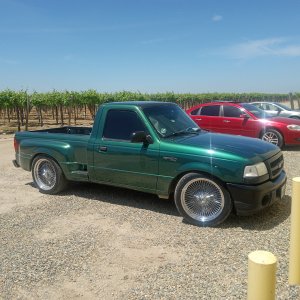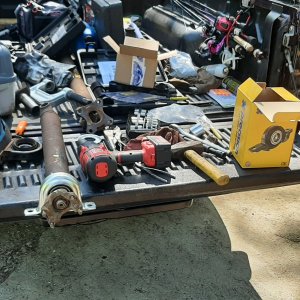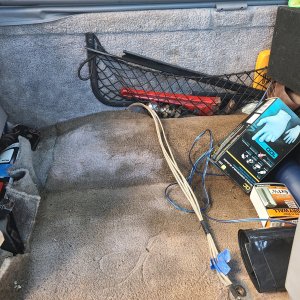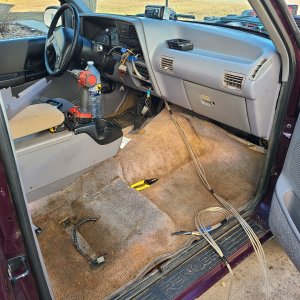Bill
Well-Known Member
- Joined
- Aug 6, 2007
- Messages
- 1,062
- Reaction score
- 898
- Points
- 113
- Location
- Sacramento, CA
- Vehicle Year
- 2007
- Make / Model
- Ford Ranger
- Engine Type
- 2.3 (4 Cylinder)
- Transmission
- Manual
- 2WD / 4WD
- 2WD
After months of dealing with vacuum leak symptoms I finally found a vacuum leak on the intake manifold. The leak is located on toward the front of intake runner #1.
A description of the symptoms for anyone who finds this through a search: High idle between shifts. The idle returns to baseline (800 rpm) at a full stop. The symptoms are more severe with the air conditioner on. Idle is higher between shifts and remains high for a longer period of time, but eventually goes down rapidly to about 500 rpm, then recovers to 800 rpm. Sometimes the idle will wander between 1500 rpm and fall to 500 rpm before settling down. Drivability when I'm not in stop and go traffic is fine, but I noticed lack of power going up hills. No codes. All the sensors indicated variables within normal range. However, long term fuel trim was slightly high at 11% most of the time, sometimes going as high as 15%.
The first picture is a view of the are where the vacuum leak is occurring. I sparyed soapy water on it and put a few pounds of pressure in the intake to locate the leak. You can see a bubble behind the shiny area on the manifold. Since I can't see or access this leak without removing the intake I went searching for a picture of it and that the second image is. It appears there is a plug to cover a hole for injection molding (or something else) and it is leaking. Has anyone come across this and knows of a repair that doesn't require a new intake? I'm thinking about trying to pop the plug out and sealing it with a hard gasket sealant and maybe coating the top of the whole area with epoxy after the gasket sealant sets. I'm kind of concerned about the ability of epoxy to adhere to whatever plastic composite the manifold is made of.
Any ideas?
Also, I'm thinking about replacing the injectors simply due to high mileage, and they have become really noisy at times. This is really preventative maintenance because I'll have access to the injectors. Does anyone know the lifespan of the injectors on this engine?
A description of the symptoms for anyone who finds this through a search: High idle between shifts. The idle returns to baseline (800 rpm) at a full stop. The symptoms are more severe with the air conditioner on. Idle is higher between shifts and remains high for a longer period of time, but eventually goes down rapidly to about 500 rpm, then recovers to 800 rpm. Sometimes the idle will wander between 1500 rpm and fall to 500 rpm before settling down. Drivability when I'm not in stop and go traffic is fine, but I noticed lack of power going up hills. No codes. All the sensors indicated variables within normal range. However, long term fuel trim was slightly high at 11% most of the time, sometimes going as high as 15%.
The first picture is a view of the are where the vacuum leak is occurring. I sparyed soapy water on it and put a few pounds of pressure in the intake to locate the leak. You can see a bubble behind the shiny area on the manifold. Since I can't see or access this leak without removing the intake I went searching for a picture of it and that the second image is. It appears there is a plug to cover a hole for injection molding (or something else) and it is leaking. Has anyone come across this and knows of a repair that doesn't require a new intake? I'm thinking about trying to pop the plug out and sealing it with a hard gasket sealant and maybe coating the top of the whole area with epoxy after the gasket sealant sets. I'm kind of concerned about the ability of epoxy to adhere to whatever plastic composite the manifold is made of.
Any ideas?
Also, I'm thinking about replacing the injectors simply due to high mileage, and they have become really noisy at times. This is really preventative maintenance because I'll have access to the injectors. Does anyone know the lifespan of the injectors on this engine?
Attachments
-
89.8 KB Views: 95
-
183.2 KB Views: 99
Last edited:


